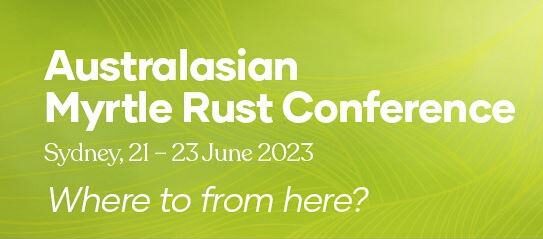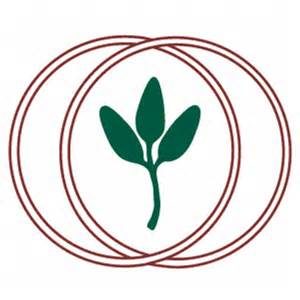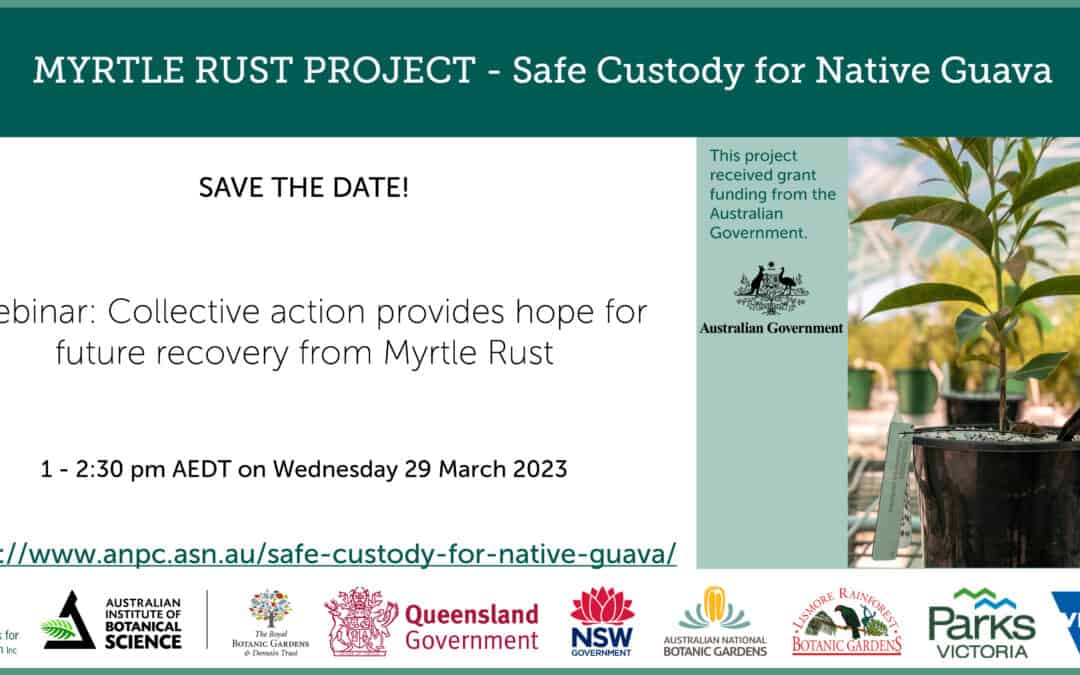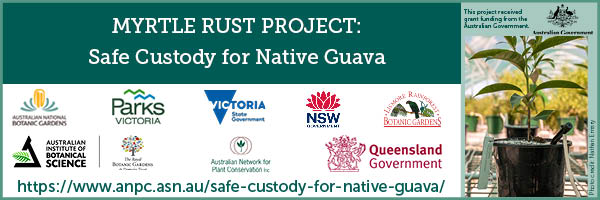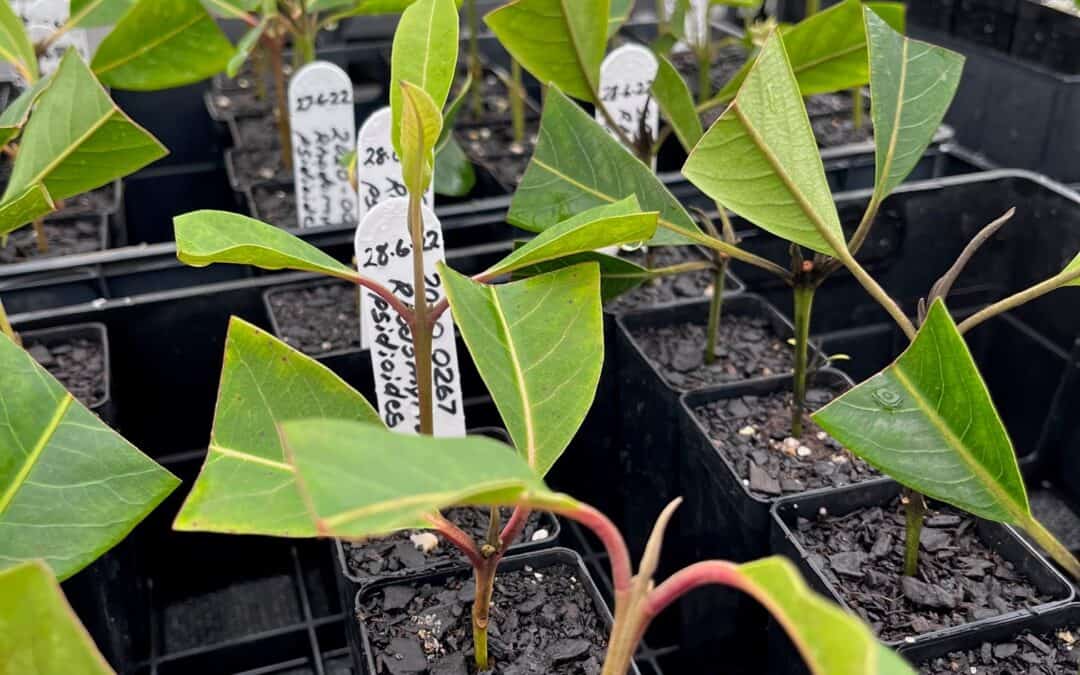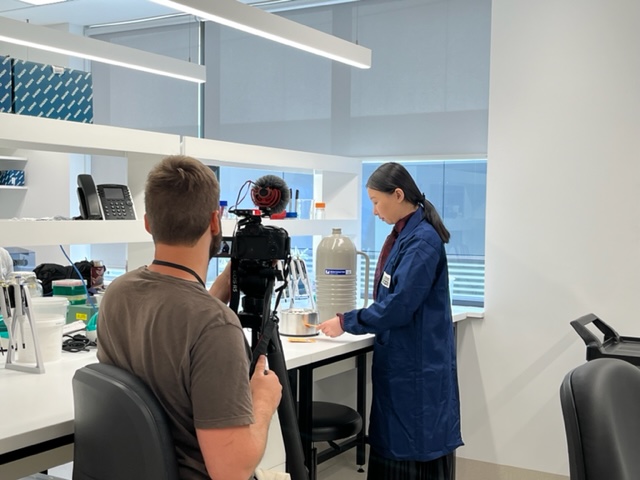
Apr 3, 2023 | News
1 – 2:30 pm AEDT Wednesday 29 March 2023
Held on Teams, Click here to join the meeting at 1pm AEDT on Wednesday 29 March 2023
Myrtle Rust is known to infect close to 400 species of the Myrtaceae plant family in Australia, with a range of impact from minor to devastating. In the latter category is the rainforest tree Native Guava (Rhodomyrtus psidioides). However, collective action provides hope for future recovery.
An upcoming webinar, jointly hosted by the Botanic Gardens Australia and New Zealand (BGANZ) Collections and Records Management group (BCARM), with speakers from the Australian Network for Plant Conservation (ANPC) and the Australian Seed Bank Partnership (ASBP), will report on two recent projects directed at saving this and other species from imminent extinction.
In this webinar, you will hear from Bob Makinson and Amelia Martyn Yenson (ANPC) about the impact of Myrtle Rust on Native Guava and take the first look at our new video on the collaborative action providing hope in the face of rapid decline. This project is supported by funding from the Australian Government.
We’ll also hear from Bradley Desmond (Acting National Coordinator, ASBP) about an inventory of priority Myrtaceae species held in ex situ collections across Australia and New Zealand. The Council of Heads of Australian Botanic Gardens (CHABG) and BGANZ undertook the first country-wide stocktake of Myrtaceae insurance populations, to understand the ex-situ representation of this Myrtle Rust affected family, and inform strategic planning, management and research.

Mar 2, 2023 | Events Category, News
| Myrtle Rust is known to infect close to 400 species of the Myrtaceae plant family in Australia, with a range of impact from minor to devastating. In the latter category is the rainforest tree Native Guava (Rhodomyrtus psidioides). However, collective action provides hope for future recovery. An upcoming webinar, jointly hosted by the Botanic Gardens Australia and New Zealand (BGANZ) Collections and Records Management group (BCARM), with speakers from the Australian Network for Plant Conservation (ANPC) and the Australian Seed Bank Partnership (ASBP), will report on two recent projects directed at saving this and other species from imminent extinction. In this webinar, you will hear from Bob Makinson and Amelia Martyn Yenson (ANPC) about the impact of Myrtle Rust on Native Guava and take the first look at our new video on the collaborative action providing hope in the face of rapid decline. This project is supported by funding from the Australian Government. We’ll also hear from Bradley Desmond (Acting National Coordinator, ASBP) about an inventory of priority Myrtaceae species held in ex situ collections across Australia and New Zealand. The Council of Heads of Australian Botanic Gardens (CHABG) and BGANZ undertook the first country-wide stocktake of Myrtaceae insurance populations, to understand the ex-situ representation of this Myrtle Rust affected family, and inform strategic planning, management and research.
Click here to join the meeting at 1pm on Wednesday 29th March. |
